Budget alternative to radiators: ceramic heating panels are worth considering
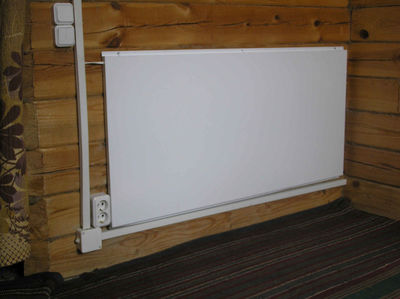
To make your home comfortable in winter in our latitudes, It is necessary to install heating inside. And the more funds the owner has, the better quality heating system can be installed.
And for a budget option, panel heating is suitable. In this case, the room is heated from heating panels built into the wall or floor.
There are several types at the moment, water, electric and infrared.
Thermal panels: what are they?
A comfortable temperature in a room is not created by heating the surrounding air. First, they heat up walls, and from them heat is transferred into the room.
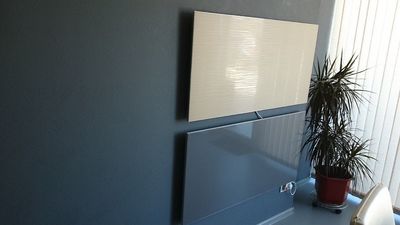
It is necessary to regulate the average temperature of the heated surface depending on where it is located. For example, ceiling panels are subjected to maximum heating, and the least - up to 40 °C - floor.
The heating device of SIP panels consists of from two steel sheets, fastened together by welding, with pipes containing a coolant between them (this is the case if the latter is water).
When electricity is used, heating elements are concreted into the thickness of the wall. To achieve a greater effect, the panels should be placed under the window. In this case, the falling cold flow is neutralized.
Pros and cons
Advantages of panel heating:
- The heating elements of the panels located in the wall allow reduce heating costs by up to 20%. The only thing that is required is that the room is well ventilated. If air exchange is carried out through filters, it is not economical. Since the ventilation intensity is extremely low.
- The location of the heat carriers inside the walls allows you to reduce the optimal temperature in the house by several degrees. For example, with convective heating, a person feels comfortable when in the room not less than 18-20 °C, with panel - required 15 °C.
- Saving useful space.
- Provided uniform heating premises.
- Even at low temperatures there is no effect of "cold" walls.
Disadvantages of radiant panel heating:
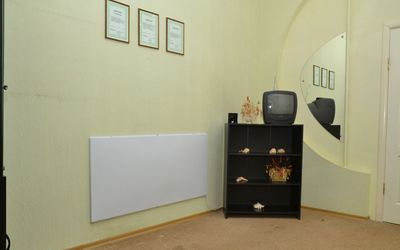
- This type of heating shows slow reaction that external loads have already changed.
- Due to the location of the heating element in the thickness of the walls, it difficult to repair. We'll have to take apart the wall and the floor.
- Requires a specific location.
- Floor-mounted panels are less efficient because the maximum heating temperature is limited. 30, rarely 40 °C.
Types of panel heating for home
There are the following types of panel heating.
Water system
The most popular scheme, due to the fact that it successfully combines low price and high efficiency. In urban housing, such a panel system is installed by default. In individual houses, it is installed only if it is intended for year-round living.
It consists of small diameter metal pipes located in the thickness of the walls, through which the air is sent water or other technical liquid.
Operating principle: water, heated in the boiler, moves through pipes that heat the wall, and it heats the air in the room.
Pros:
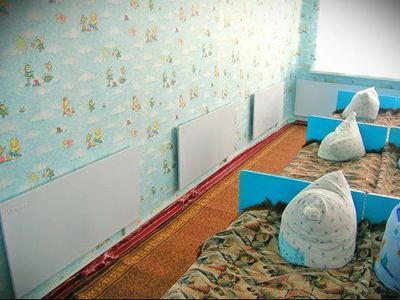
- the house is heating up in a quarter of an hour;
- cheapness;
- simplicity panels in the installation.
Cons:
- can not be used other liquid except water;
- cools quickly.
The convection process is quite slow, so it is necessary to place the radiator as low as possible, otherwise the floor of the room will be cool.
Electrical panels
Operating principle: the device creates a stream of infrared rays that have a certain wavelength. They It is the solid bodies that heat, not the air. As a result, at a temperature about 18 °C, the person feels quite comfortable.
Important! All solid bodies in the room, falling under the action of rays and heating up, become sources of secondary radiation. Therefore, it seems that warmth surrounds you from all sides.
IR panels are classified according to their location:
- Ceiling are considered the most effective, since in this case the entire area of the room is heated. And they can heat up up to 900 °C - these are shortwave devices.
- Wall mounted panels. It is recommended to place them as low as possible - the effect will be greater. Maximum heating up to 400 °C.
Advantages:
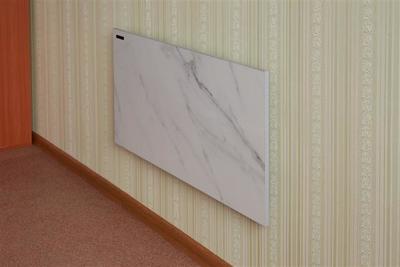
- You can find out that the device has started working in just 10 minutes.
- No creation convective air flow, which means that dust will not move around the room.
- They don't require it routine maintenance and control of work.
- Externally the panels look very attractive.
- Saving space thanks to its compact size.
- Wide area of use.
Attention! Among the disadvantages it is worth noting rapid cooling of the room and quite high power consumption.
Recently, heaters have started to be mounted on plasterboard wall coverings. This is much cheaper.
Ceramic from Nikaten
The panels are made of natural ceramics, due to their ability to quickly accumulate heat and slowly release it to the environment as it cools.
A monolithic metal structure with a polymer coating applied to which ceramics are hermetically attached. A flexible heat-resistant cable is laid between the body and the ceramics, which serves as a heating element. On facial on the side of the tile the operating temperature can reach 80 °C, from the back - up to 90 °C.
The device combines two types of heating: infrared and convection. This ensures fast and uniform heating of the air in the room.
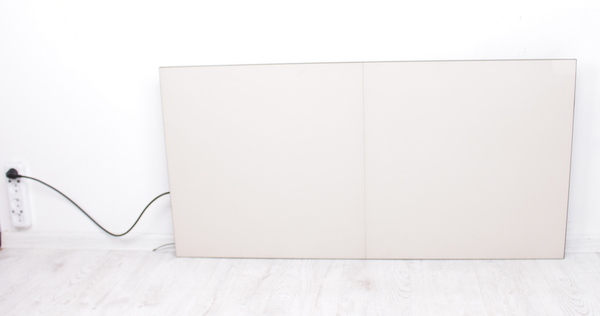
Photo 1. Ceramic hybrid infrared panel model Easy Heat, power - 700 W, manufacturer - "KAM-IN".
Advantages:
- Approved for use in any premises. Including those with high humidity.
- A thermal effect is created that has a beneficial effect on the human body. In its effect, it resembles "Russian stove" effect.
- At average panel power at 370 W consumes electricity at the level of a desktop computer. After simple calculations, you can find out that compared to fan heaters and convectors, it saves up to 30% of electricity. And if you install a thermostat and a multi-tariff meter, the percentage can be raised by a couple more points.
- Long service life - up to 30 years.
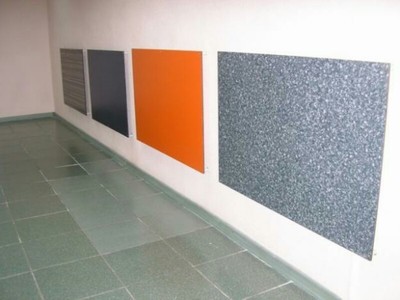
There are practically no downsides, only that the panels after installation can't be moved to another room, and it is prohibited to dry things on them.
One of the popular brands is the company Nikaten.
Their designs combine two types of heat - infrared (70%) and convection (30%) - this ensures uniform heating in the room.
The devices are used as a primary or additional source of heating. In terms of monetary equivalent, they allow the homeowner to save from 20 to 35 rubles per square meter of living space.
Heating panels
Heat is transferred by radiation. In this case, it is not the air that is heated, but walls, furniture, etc. All this happens because the walls, ceiling and floor of the room are used as heating systems.
Their advantage is that the average temperature in the room may be lower than generally accepted, but the person will feel comfortable. Gives significant savings in the form of a reduction in heat costs for heating.
There are also disadvantages: poor maintainability, high cost of installation and debugging.
Wall or floor mounted, choose
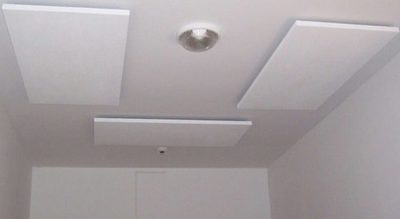
Even at the design stage, it is necessary to decide on the installation location. For example, in America It is customary to arrange panels in half.
From a construction point of view, this is a very convenient solution, since it is enough to install heating into the floors when pouring them.
It will take longer to heat up, because when the panels are placed on the floor, the maximum temperature equals 30 °C. If you heat it higher, it will burn your feet.
IN Europe It is common to place thermal panels on ceiling. High temperature up to 50 °C allows you to heat the room faster. But from an economic point of view, such an arrangement will lead to its increase in price.
Installation
Installing heating panels is not difficult. First, you need to decide on the location. This is done on the cold (outer) wall of the room, near the balcony doors, under the windows and near the beds. It is necessary to calculate the total power so that one square meter receives approximately 50-100 W.
Useful video
Check out the video for an overview of the installed panel system.
Let's sum it up
Modern heating panels are excellent alternative to traditional radiators, which is superior to them in many ways. They can be placed in any object: residential, warehouse, public, educational, medical or preschool.






